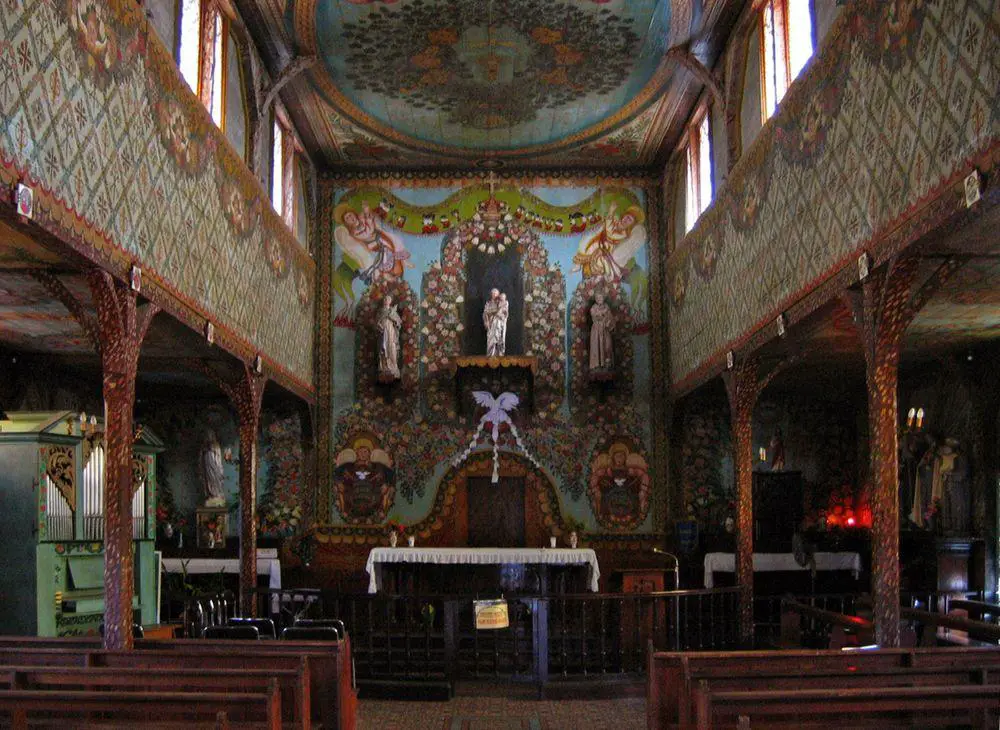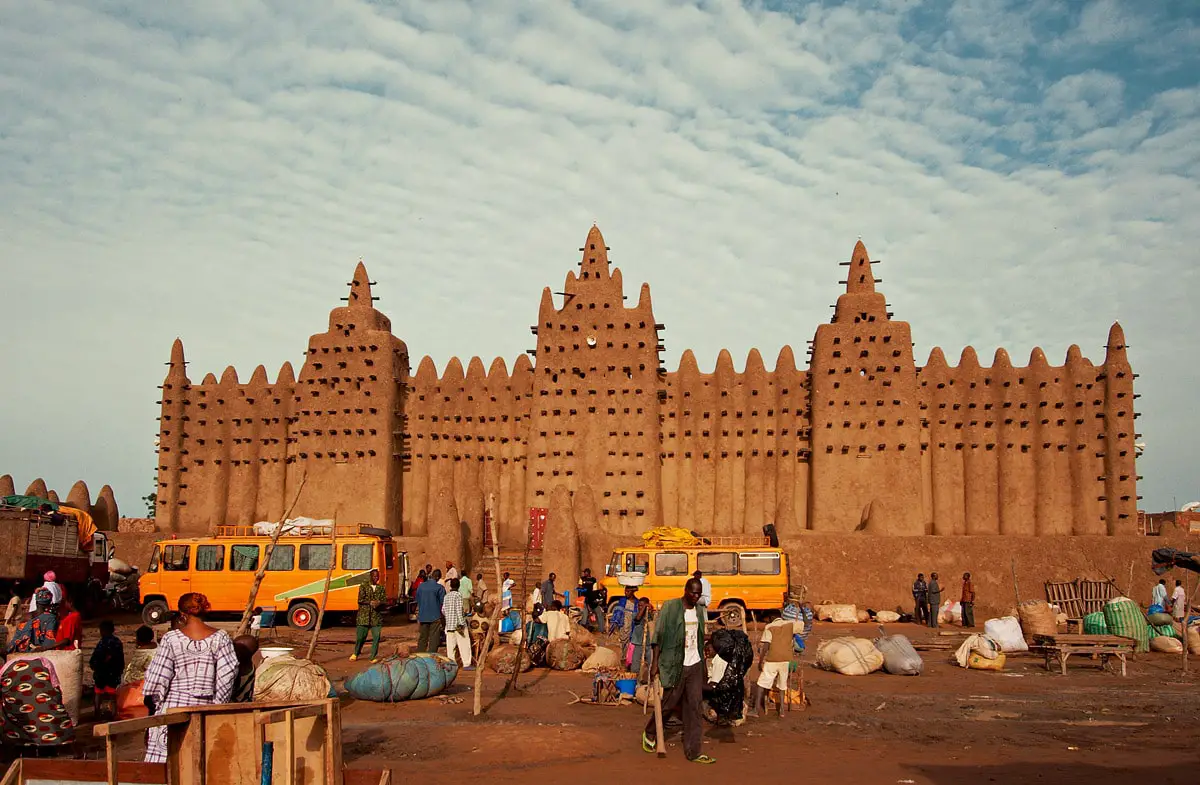World 🢖 South America 🢖 French Guiana
Churches 🢔 Religious architecture 🢔 Architectural wonders 🢔 Categories of wonders
Wonder
Iracoubou St. Joseph Church

 In short
In short
From the outside the St. Josephs Church in Iracoubou village looks simple and unpretentious. But this simplicity is deceiving – the frescoes inside represent a true masterpiece of naïve art.
 41.8%
41.8%
GPS coordinates
Location, address
Name in French
Year of construction
Art style
Branch of Christianity
Map of the site
If you see this after your page is loaded completely, leafletJS files are missing.
 In detail
In detail
Iracoubou
The small village of Iracoubou was founded in the early 19th century in the lands of the Arawak and Galibi people. The town is located at the estuary of Iracoubou stream in the site where it is crossed by a (locally) important road between the main city of French Guiana – Cayenne and the capital city of Suriname – Paramaribo.
Iracoubou is not far from the Atlantic ocean – but the land between the village and ocean is covered with tropical forest. In fact, most of the land around the village is a pristine forest with smaller patches of agricultural fields closer to the settlement.
Prosper Raffray
Father Raffray arrived in this remote outpost of civilization on March 6, 1886. In the remote, almost isolated village amidst the rainforest lived some 500 – 600 people. Raffray decided that he will make a model city. One of the first steps in this was the construction of a new church.
Works were started by the local people in 1887 and in January the church was built. This structure is constructed from the local trees and the walls are infilled with bricks.
Pierre Huguet and frescoes
The remote French Guiana served as a penal colony for those French citizens which were unwanted by the officials in France. Among these prisoners were diverse people – diehard criminals and idealistic anarchists, crude folks, and sophisticated intellectuals.
Pierre Huguet was one of these unfortunate people. Most likely he was born sometime around 1850 in Clermont-Ferrand and sentenced in 1889 for 20 years for burglary. Sometimes around 1893 he was assigned to a prison in Iracoubou.
This man definitely did not have a placid character. Six times he tried to escape from prison until he was released after serving his term in 1909.
Father Raffray invited (or rather – insisted) him to decorate the church and Huguet did this, covering some 600 m² inside the church with many colors and artworks.
This man barely could write and read – but he clearly had good skills at painting and a vivid imagination.
Prisoner naïvety
This unexpected artist endowed Iracoubou village with a true wonder of art. The church is ornamented with a garish, somewhat tasteless and at the same time – very charming frescoes.
Naïve art is a recognized value nowadays and Iracoubou St. Josephs Church is a rare and exquisite example of this style.
Artist with good skills made faux-marble, he painted garlands of flowers and diverse characters from the Bible. People in Iracoubou were living amidst exotic tropical nature – but the paintings are replicas/interpretations of the Baroque and Rococo art from distant France and, besides the gaudy colors, show almost no local influence.
The frescoes of Iracoubou church are a good representative of naïve art. Such art does not pretend to be sophisticated and "professional" but at the same time it is inspiring and with its own, unexpected richness.
References
- L’église d’Iracoubo. Colors de Guyane. Accessed in 08.03.2012.
 Linked articles
Linked articles

Wonders of French Guiana
The climate in this lowland rainforest is humid and very hot – thus French Guiana has lots of known (and yet unknown) values of biological diversity, but not that many man-made landmarks. This remote country has been used as a prison in the 19th and 20th centuries but now here is located one of the main cosmoports of the world.

Religious architecture
Since ancient times human talents and skills have been expressed in religious architecture and arts, and traditions and rituals have evolved around pilgrimage sites. Religious buildings represent a major part of the highest achievements in architecture and crafts.

Churches
Throughout the millennia Christian churches have been the epitome of architecture and arts achievements in Western culture.
 Recommended books
Recommended books
French Guiana: The Bizarre and the Beautiful
Despite being home to the largest snakes, biggest rodents, and most ferocious mosquitoes in the world, Donna Mulvenna falls in love with French Guiana, taking readers on a humorous, chaotic, and entertaining journey that can only result in a severe case of wanderlust.
Space in the Tropics: From Convicts to Rockets in French Guiana
Rockets roar into space—bearing roughly half the world’s commercial satellites—from the same South American coastal rainforest where convicts once did time on the infamous Devil’s Island. What makes Space in the Tropics enthralling is anthropologist Peter Redfield’s ability to draw from these two disparate European projects in French Guiana a gleaming web of ideas about the intersections of nature and culture.


